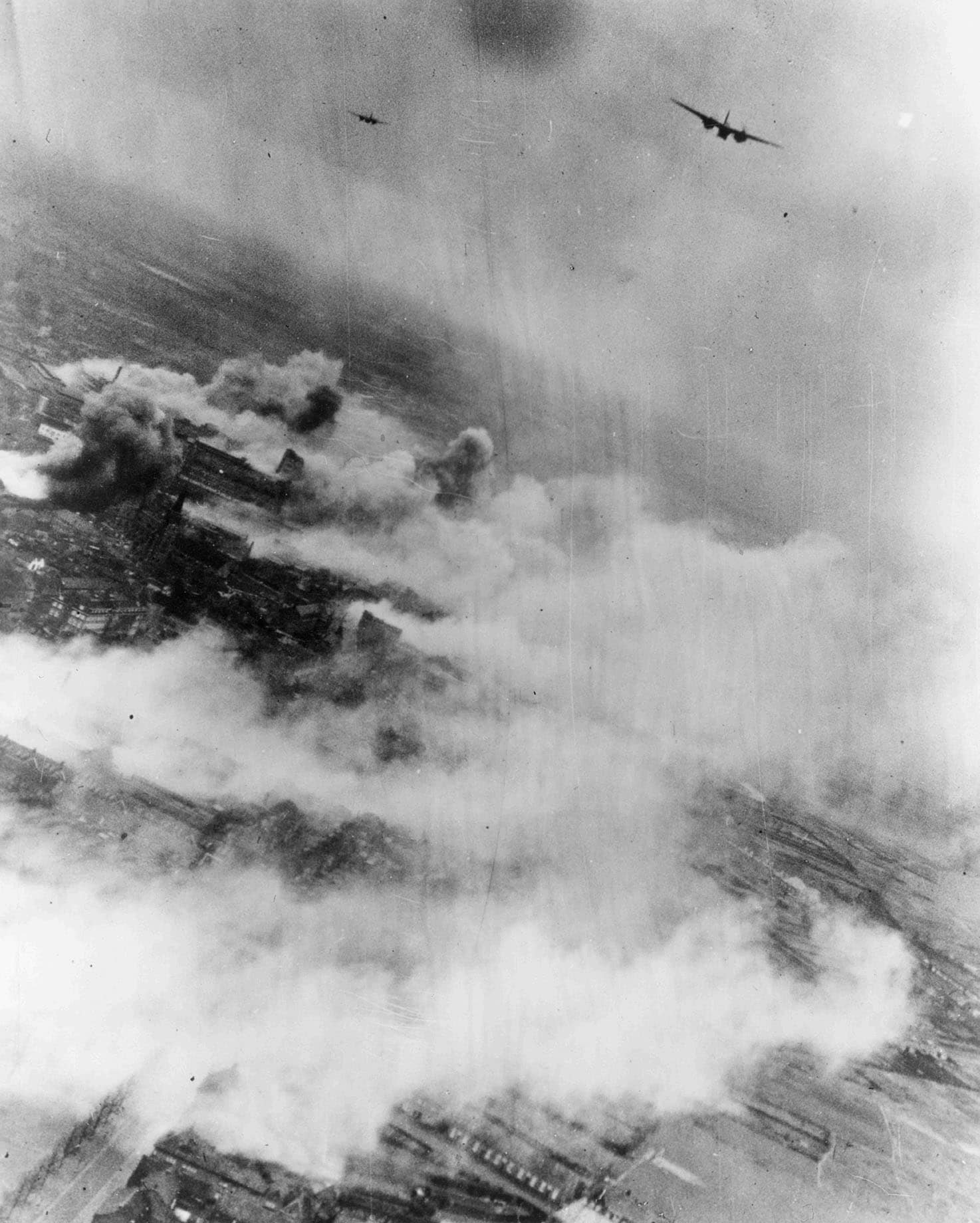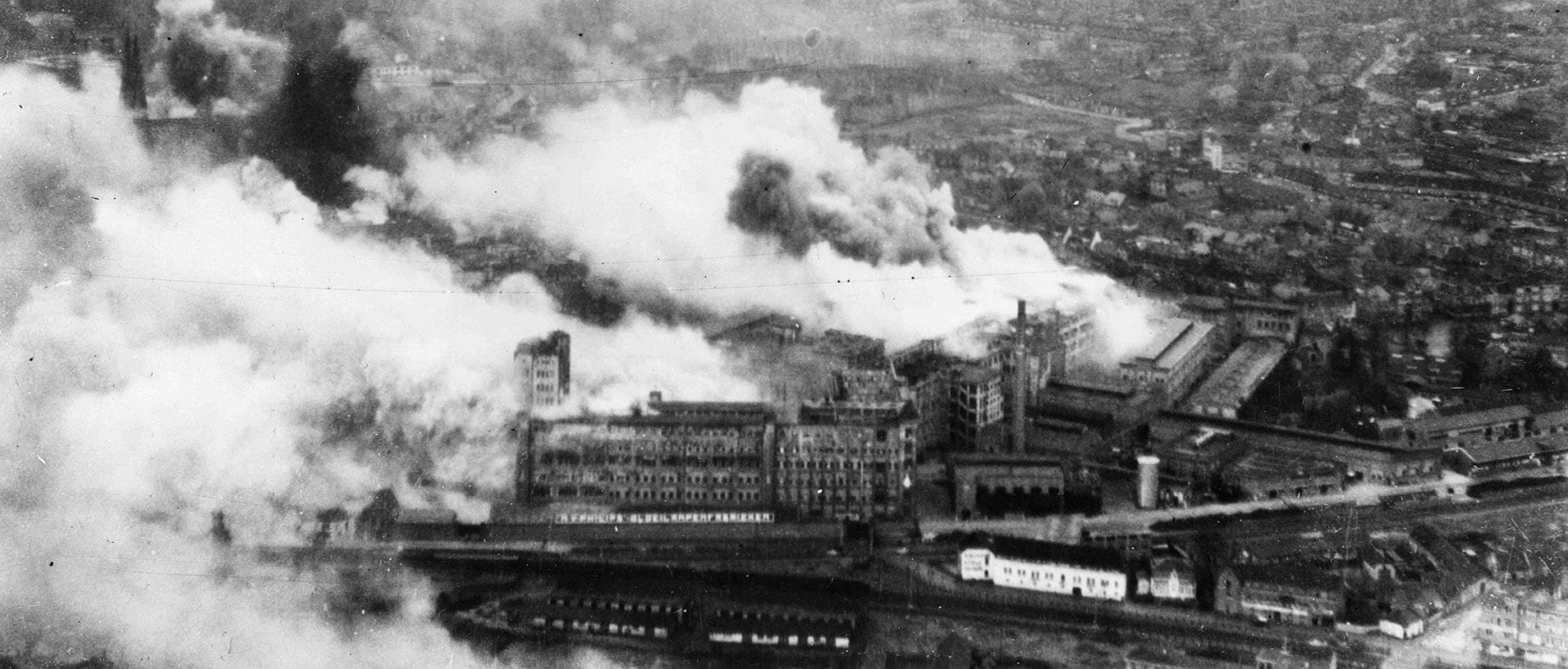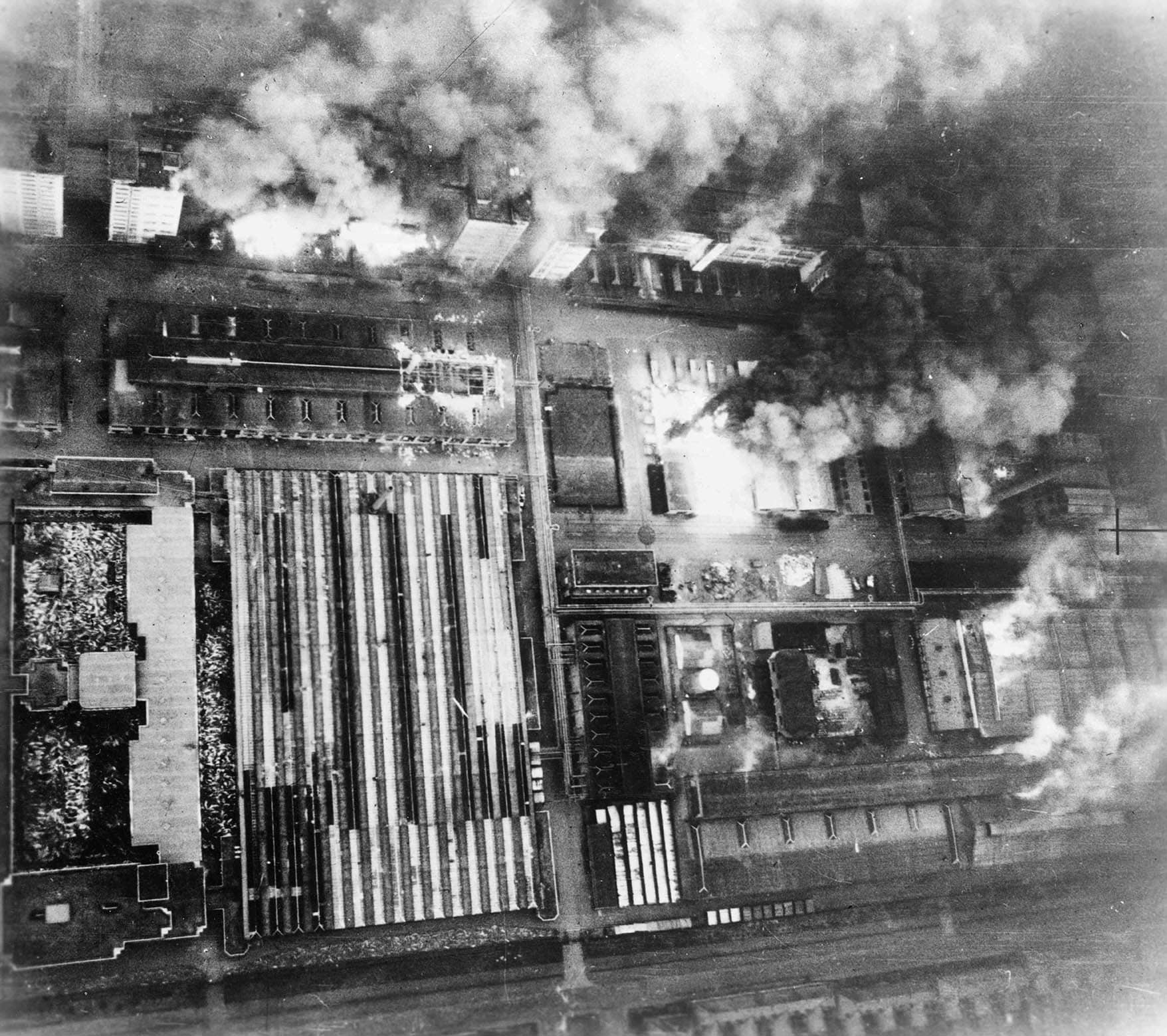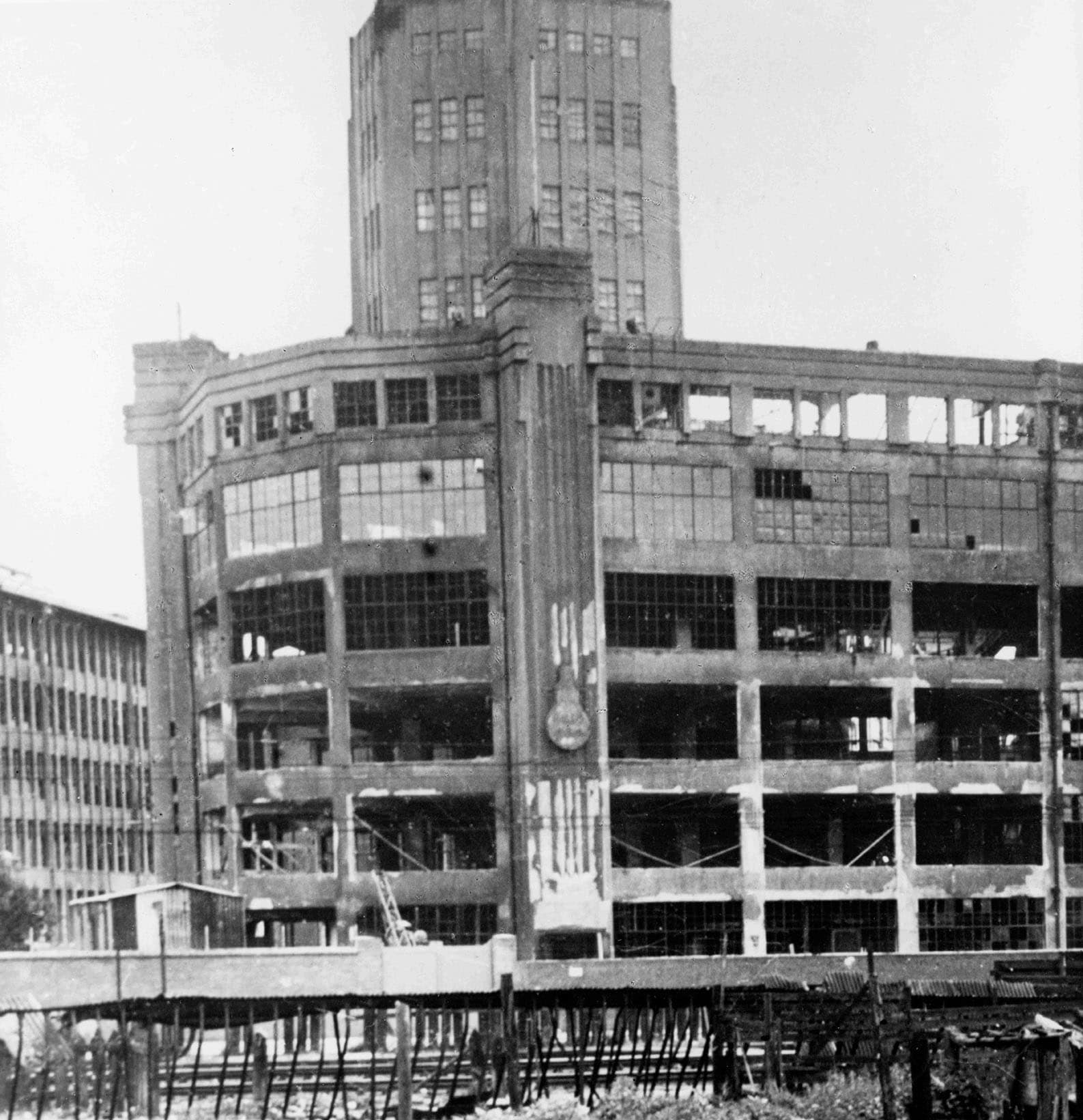The tragic Saint Nicholas Day of 1942
On St Nicholas Day in 1942 the residents of Eindhoven were startled by a fierce bombing raid.
It’s Sunday, 6 December 1942, the feast of St Nicholas. Children look at their newly received toys with happy faces, families visit each other. It is a moment to escape the reality of a country at war. The Netherlands has been suffering under the pressure of the German occupation for two and a half years. And then, without the warning of an air siren, the unexpected happens.
It is half past twelve, lunch time, people are sitting at the table for Sunday's meal, others are taking a walk or on their way to visit family or the cinema. Suddenly there is a hum of planes. The planes fly very low over the city, the next moment there is a crackling and barking sound from the anti-aircraft guns. Bombs are falling. In an instant the city looks very different. In utter panic people flee left and right to find shelter.
The air raid, carried out by 89 fighter planes of the British Royal Air Force, begins at 12:35 pm. In three successive short waves of attacks, the very low-flying aircrafts drop their bombs on the factory complexes on theEmmasingel and in Strijp. The whole operation lasts no longer than fifteen minutes. With 'Operation Oyster', the code name of this air raid, the Allies attempt to target the production of radio lamps used by the Germans.


Several Philip buildings are badly damaged by the bombs. At the Strijp complex, all major radio factories are hit. The glass factory is hit and the Bakelite factory burns out completely. The company school on Kastanjelaan, which also houses the first Philips Museum, is largely destroyed.


The headquarters on Emmasingel is almost completely in ruins. The smaller buildings on the densely built-up area are hit directly and go up in flames. The large factory buildings on Emmasingel, in which light bulbs and electron tubes are made, suffer only minor damage. A number of bombs miss their target and detonate alongside the factories in the surrounding residential and shopping area, especially on the Demer, a busy shopping street in the heart of the city.
Stray bombs also hit the hospital on the Vestdijk and the railway station. It is these misses that cause many casualties in the city and extensive damage to buildings. More than two hundred houses are rendered uninhabitable. The bombing killed 172* people and about the same number is injured.
Article written by Miriam Lengová, Philips Company Archives.
Copyright: Royal Philips / Philips Company Archives.
*Source: Stichting 18 september

